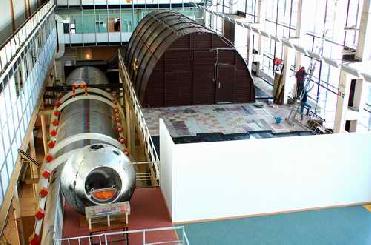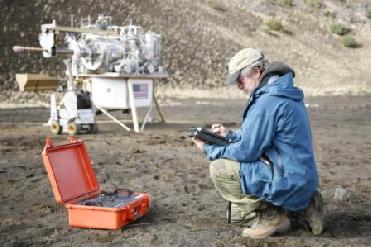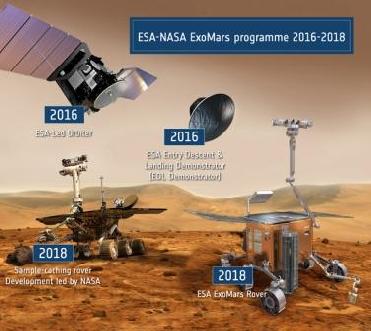
The Mars500 isolation chamber at IBMP in Moscow consists of several modules. The living and working area has been integrated into the long tube (on the left in the image) below the virtual Mars surface (on the right in the image). Credit: DLR
MOSCOW (BNS): After a journey to space and the moon, man has now set his eyes on Mars. With this aim, six astronauts will begin the journey to Mars on Tuesday. They will embark on an isolation study Mars 500 at the Institute for Biomedical Problems (IBMP) of the Russian Academy of Sciences.
Six astronauts will be shut inside an isolation chamber for a period of 105 days, in order to train for some aspects of a simulated journey to Mars. The crew members are: Oliver Knickel, Germany; Cyrille Fournier, France; Sergey Ryazanskiy, Russia; Aleksey Baranov, Russia; Aleksey Shpakov, Russia and Oleg Artemiev, Russia. On the European side, the Frenchmen Cedric Mabilotte and Arc’hanmael Gaillard will act as backup and ground team members.
Along with IBMP and the European Space Agency (ESA), the German Aerospace Agency (Deutsches Zentrum für Luft- und Raumfahrt; DLR) is participating in the Mars500 study by providing a number of experiments as well as financial support.
According to scientists, the distance between the Earth and the Red Planet fluctuates between 56 and about 400 million kilometres. Even if the two planets are favourably aligned, a return journey would take about 500 days in total, excluding a one-month stay on the Red Planet itself for conducting research.
Such a human spaceflight mission, which could become a reality in about two to three decades, puts extremely high pressure on the crew. Scientists said that apart from long microgravity and short hypergravity phases and the influence of cosmic radiation, which is not being investigated in the context of the Mars500 mission, the loss of visual contact with Earth must be compensated for and vital decisions will need to be taken autonomously due to delayed radio communication with the ground. In addition to this, astronauts should also be able to service the technical systems of their spacecraft without deliveries of additional equipment, the sources said.
The isolation chamber that will house six astronauts from March 31 onwards is a tube-shaped modular system containing 180 square metres of living and working space. In addition to this, there are cold storage and freezer units for food, most of which is provided by German suppliers, as well as a small quarantine station. The air pressure and gravity field are normal. Every test subject has a cabin with three square metres of floor space at his disposal, which also accommodates a narrow bed. Radio traffic to and from the ground station takes place with a 40-minute delay. The astronauts are also allowed to send e-mails and video messages, sources said.
 Next Article
Next Article












The Indian Air Force, in its flight trials evaluation report submitted before the Defence Ministry l..
view articleAn insight into the Medium Multi-Role Combat Aircraft competition...
view articleSky enthusiasts can now spot the International Space Station (ISS) commanded by Indian-American astr..
view article